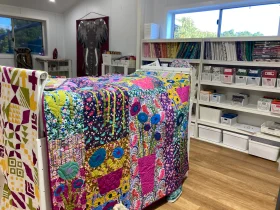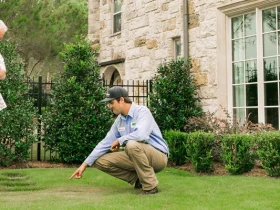Are you ready to transform your backyard into an outdoor oasis? In this post, we share ideas that inspire you to take a little step to elevate (not literally, of course) your landscape. So, no matter if you have a large yard or a small patio, these will inspire you to create your vision.
The Science of Landscape Design: Enhance Your Outdoor Aesthetic
Landscape Architecture: What Do You Need To Know In A Nutshell
Landscape architecture is not simply a mix of plants and paving stones; it is an art form that sets up a relationship between nature and human residence. It encompasses environmental awareness, spatial distribution, and design theory as well as functionality. Landscape architects take into consideration the climate, terrain, soil type and ecosystems of an area. With this fundamental knowledge, the designs are not only beautiful but also sustainable and functional to the environment in which they are placed. This foundational approach is essential to effective landscaping design, ensuring both visual appeal and ecological harmony.
Landscape architecture is primarily an aesthetic experience that balances practical functionality with an awareness of how spaces are experienced by their users. An appropriate interpretation of this thinking could be the way paths flow throughout a garden or seating areas that encourage a pause and an interaction with the space. It is also important to learn seasonal changes: how the season affects plants, how the sun moves throughout the year, and how weather impacts how a site is used, etc. Once learned these fundamentals totally enables the homeowner to construct their outdoor areas that are pleasing to both the process and their life.
Selecting a Theme: From Zen Gardens to Cottage Comfort
Landscaping with a theme can certainly turn a standard yard into a beautiful outdoor oasis. A theme guides every decision — from picking the plants to the design of the pathway and the furnishings. So choosing one simplifies the entire design process. A Zen garden, for instance, conveys calm and simplicity by using such design elements as raked gravel, rocks, and finely pruned trees, which bring users into a peaceful meditational stance and, ultimately, into contact with nature.
On the other hand a cottage garden theme will typically have an informal planting structure, an abundance of flowers and a combination of perennials and annuals; all features that make for an atmospheric and whimsical look that takes you back in time. It also helps support biodiversity of all kinds, and welcomes pollinators to the property. Other popular themes are modern minimalist gardens with their straight lines and colorless palettes, Mediterranean gardens with an abundance clay pots and drought resistant plants, and tropical landscapes with their abundance of colorful foliage and textures. Whatever theme you opt for it should be a reflection of your taste and compliment the architecture of your home.
Core Standalone Elements: Focal Points, Paths, Plants
The most significant components offered by the elements of landscaping will always be focal points, pathways, and purposeful plants. Focal points run the gamut from a captivating water feature to a pruned tree to an interesting piece of art something that not only draws the eye of visitors but also adds layers to the overall design. Placement of a focal point guides the observer through the space, allowing exploration and connection to the land.
After that, pathways are the sisties of landscape design, directing movement and linking different areas together. Walkways can be made with natural stone, gravel or even reclaimed wood; they can be laid out in a linear manner, or, winding to go with the theme. We need to choose their width and materials appropriately so that the paths fit into the design, allow foot traffic and contribute to safety. Lastly, plant selection should accent focal points and fill space, taking into account bloom times, color palettes, and maintenance levels. With careful inclusion of these aspects, your outside space can be a seamlessly incorporated and beautiful landscape.
Inside Out: Effortless Transitions to Indoor-outdoor Living Areas
Bringing it All Together: Uniting Indoor and Outdoor Design
The transition between indoor and outdoor living is one of the keys to successful landscaping. This can really improve the utility and enjoyment of your home. Get the style of your interiors and work towards a similar aesthetics outside the home. So, if your interiors are reminiscent of a rustic farmhouse, simulate that outside with reclaimed-wood furniture, a fire pit, or natural stone paths to charming perennials and wildflowers.
When it comes to indoor-outdoor integration, you will want to use similar color schemes, materials, and textures to help merge the two spaces. Fixtures like large sliding glass doors offer an entryway that serves as a transition to the outdoors as well as a source of natural light within the home while bringing the outside in and complementing that experience further with outdoor kitchens or dining areas that mirror the facilitation of these same experiences families will gather, entertain and experience the ambiance of the outdoors together. This can be achieved through deliberation in the flow between such spaces and they can promote a sense of togetherness and nature in the neighbourhood.
Comfort and Durability Come Together in Outdoor Spaces with Functional Furniture
Outdoor furniture helps bring the comfort and livability of your living room into your own backyard. When choosing furniture, go to those materials that can resist the weather, which means that it can stand the seasons, while offering some comfort for either resting or entertaining. Popular choices that mix durability with chic include wicker, teak, aluminum, and stainless steel. You can also increase comfort if you buy cushions from UV-resistant and water-repellent fabrics, in which case the stain would not be able to become scratched and faded in the sun, and also can protect cushions from the rain.
Also think about how seating is arranged, intimate groupings instead of pieces isolated by space help turn a patio in to an inviting meet-up place. Some other functional elements you can add to enhance the character of the area while improving the capability of the space are outdoor rugs and tables. In the end, the aim should be to create an outdoor space that is comfortable enough for people to stay in — whether over food, a good read or simply basking in the sun.
After Dark: How Lighting Can Help Transform Your Yard
Outdoor lighting is the unsung star, extending the usability and beauty of outdoor spaces when the sun goes down, and landscaping never really ends. A lighting plan that is thought out accentuates your design features & safety too. Ambient lighting from wall sconces or pendant lights can provide warmth and atmosphere, inviting guests to linger and enjoy the beauty of your garden long after sunset.
You can use spotlights and uplighting to highlight focal points like trees, body of water, or even architectural elements, creating dramatic effects and bringing out the natural beauty of the landscape. You will also want to think about pathway lighting — you want guests to be able to traverse your yard safely, but you also want this part of your yard to look good! The lights can be solar-powered landscape lights which are more environmentally friendly in that they will help reduce the amount of electricity used and at the same time, help you contribute to the early evening atmosphere, an almost magical setting – as the summer sun’s glow bathes the remainder of the garden. Well-planned outdoor lighting does more than just provide light; it does also help to bring a beautiful atmosphere to your outdoor space to make it feel welcoming at any time of day or night.
Color Theory In Landscaping: Using Color Schemes From Nature
Explaining Why Plants Change Colors with Seasons
The colors are an integral part of any landscape as it brings emotional connection and visual balance with thoughtful color design in a landscape. Knowing how the colours shift with the seasons can be incredibly useful for planning a garden that always looks interesting and attractive. Different plants bloom in every season; for example, tulips are seen in the soft pastels of spring, while sunflowers can provide bold yellows and fiery reds in the summer.
Fall has the warm colors of burnt oranges, burgundies, and rusts and winter provides an austere calmness with evergreens keeping their color and ornamental grasses moving in the breezes. To prevent your landscape from looking barren or neglected, include plants that provide seasonal interest such as hellebores, which flower in early spring, or foliage powerhouses in fall like maples and oaks. By watching color develop in your garden you will plant flowers that coordinate and compliment each other and liven your landscape.
Color Psychology: How to Create Emotions with Color in the Garden
The colours selected for landscaping can significantly influence the atmosphere of a space, which in turn creates an emotional response to that space from those functioning in it. According to the principles of color psychology, certain colors create specific moods such as blues and greens that lean towards calmness and serenity which is ideal for meditation gardens or retreat-like spaces. Warm colors (reds and yellows) add energy and excitement and are perfect for active spaces where people gather to socialize.
Different color strategies not only help create a particular tone but also change the perception of space in the garden. In other words, light hues create openness in tight spaces, while dark tones bring intimacy and coziness. That is why color psychology will help you make the room evoke emotion and perform specific functions such as relaxation, stimulation, or contemplation.
Using the Mix of Textures and Shades for an Eye-Catching Effect
Creating interest gives your landscape a visual break, and is more than just picking out colours; Textures play an even greater role because you can easily blend plenty of colours but if you are not careful to choose some contrasting texture, your landscape can come to a point of dullness. Combining plants with contrasting leaf forms, textures, and colours will add plenty of layers and interest to the garden. Match smooth-leaved ferns with prickly ornamental grasses or put the coarse bark of trees and shrubs next to soft and gentle flowers. The interplay of mixtures can form an enticing variation that begs to be seen and enjoyed.
A carefully selected palette of shades within the selected colour scheme thus enables a balancing act in design. Dark purple combined with light lavender together pair well and balance each other out to ease the eye from one plant to the next one in the garden. The secret is in all of these textures and colors relating back to your theme, which is the only way to achieve cohesive, balanced, and beautiful outdoor design.
Sustainable Landscaping: When Style Meets Sustainability
Choosing Native Plants: The Benefits
With the rise of the environmental movement, the practice of eco-friendly landscaping has taken hold in the past few decades. The most powerful weapon In this movement is the native plants. They are far less likely to need intervention or special care in landscaping as these native species have adapted over the years to the local climate, soil and ecological conditions. This will take up less water and fertilisers and can be resistant to local pests and diseases thus creating a garden which is more sustainable.
Native plants will depend on your local environment, so you do have to know what types will thrive to choose the right ones with regards to soil and climate. But this is also the time of year to be thinking about how well native plants fit into your landscape. For example, while knockout roses may be all the rage, a native wildflower garden made up of coneflowers, black-eyed Susans, and asters can provide not only your garden with seasonal stunners, but also nature with some ecological benefits, too. Supporting local biodiversity, attracting native pollinators, and doing a little less harm to your local ecosystem are also benefits from growing native plants.
Efficient Irrigation Techniques: Water-Wise Gardening
In present-day gardening, efficient use of water may be the number one landscaping goal, and innovative ideas are out there to help you create a stunning yard while increasing conservation efforts with this precious resource. Water waste can be reduced significantly by implementing efficient irrigation techniques. Drip irrigation systems, for example, activate when plants need watering and deliver water directly to the roots, reducing waste through evaporation and runoff. You can use rain barrels to collect and store rainwater and use natural resources to water your plants.
Even more, if one chooses drought-tolerant plants, the need for watering is greatly reduced while still providing beauty. Using succulents and xeriscaping methods you can create an eye-catching landscape which can sustain itself in the heat of the desert. In addition, putting mulch around plants retains moisture in the soil and prevents growth of weeds, another way to save on water. With all you can get from these water-wise gardening practices, you can end up with a breathtaking landscape that is both good looking thrive and an environmental conscientious.
Gardening for Wildlife: Building Habitats Where Wildlife Thrive
More and more homeowners ask how their landscapes can foster support for local wildlife populations out of growing concern for wildlife issues. One approach to gardening for wildlife is to choose plants that give nectar for pollinators, berries for birds, and shelter for other smaller wildlife. Habitat gardens also normally have layers of vegetation such as groundcovers layers shrubs layer trees so that those various species all have food cover and nesting sites.
Furthermore, implementing things such as bird houses, bat boxes, or insect hotels can increase the attractiveness of wildlife in your landscape and provide room for a thriving ecosystem. Even small features like creating a pond, or leaving part of your garden to grow wild, can help you make a contribution to increase biodiversity. A wildlife friendly garden allows you to make your garden beautiful and contribute to conservation and healthy ecosystem processes by keeping vital habitat available for the animals in our environment.
By engaging in creative landscaping design that contributes to your home aesthetics/functional and sustainable practices, this is how to transform an outdoor space while promoting a connection to nature. These unique methods and concepts allows you to create a landscape that embodies your personal style while being eco-friendly and enhancing your health. Happy landscaping!









